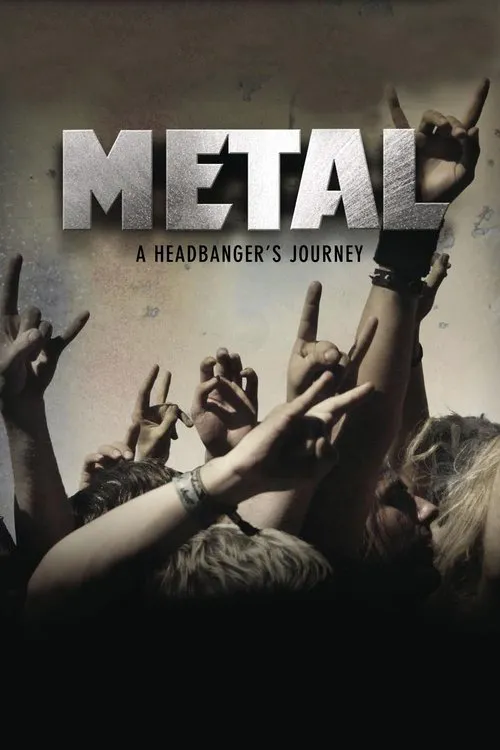Metal: A Headbanger's Journey

Plot
Metal: A Headbanger's Journey is a 2005 Canadian documentary film that delves into the world of heavy metal music, its subgenres, and its culture. The film is directed by Sam Dunn and Scot McFadyen, two metal fans turned documentarians. Through a mix of interviews with metal artists, fans, and industry professionals, the film explores the evolution and diversification of heavy metal, from its origins to the present day. The film begins with an introduction to the genre's early days in the late 1960s and early 1970s, when blues and hard rock musicians such as Led Zeppelin, Deep Purple, and Black Sabbath started to push the boundaries of traditional rock music. The New Wave of British Heavy Metal (NWOBHM) emerges as a key moment in metal's development, with bands like Iron Maiden, Judas Priest, and Def Leppard bringing a new level of energy and theatricality to the genre. As the film progresses, the documentary explores the various subgenres that have evolved from the core of heavy metal. Power metal, with its symphonic arrangements, fantasy lyrics, and virtuosic guitar work, is showcased through bands like Helloween, Blind Guardian, and DragonForce. The film also delves into the realm of Nu metal, characterized by its downtuned guitars, rap-influenced vocals, and aggressive beats. Bands like Korn, Linkin Park, and Slipknot are featured in this section, highlighting the subgenre's commercial appeal and mainstream success. Glam metal, with its androgynous image, big hair, and party anthems, is given a nod through interviews with Mötley Crüe, Poison, and Twisted Sister. This subgenre's excesses and scandals are also explored, showcasing the genre's darker side. Thrash metal, characterized by its fast tempo, shredding guitar solos, and apocalyptic lyrics, is represented by bands like Metallica, Slayer, and Megadeth. The film highlights the social commentary and aggressive energy of this subgenre, as well as its impact on the metal scene. The documentary also examines the more extreme subgenres of black metal and death metal. Black metal, with its cold, atmospheric soundscapes and occult-inspired lyrics, is introduced through interviews with pioneers like Mayhem and Burzum. The film touches on the subgenre's notorious reputation, its connection to Satanism and neo-Nazism, and its influence on the wider metal scene. Death metal, known for its brutal, downtuned sound and morbid lyrics, is represented by bands like Cannibal Corpse and Morbid Angel. The film explores the subgenre's evolution from its early days in Florida to its global spread, as well as its reputation for being one of the most extreme forms of heavy metal. Throughout the film, Dunn uses his family-tree flowchart to visualize the relationships between different metal subgenres, highlighting their commonalities and divergences. The chart shows how various subgenres have branched out from a central trunk, with some sub-subgenres emerging from others. This visual representation adds a tangible, educational element to the documentary, making it an engaging and informative resource for metalheads and non-heads alike. One of the strengths of Metal: A Headbanger's Journey lies in its exploration of heavy metal culture beyond the music itself. The film delves into the world of metal festivals, where fans gather from all over the globe to celebrate their shared passion for the music. Interviews with fans, promoters, and organizers reveal the community aspect of heavy metal, where individuals from different nationalities and backgrounds come together to share their love for the music. Additionally, the documentary touches on the commercialization of heavy metal, from the rise of MTV's Headbangers Ball to the mainstream success of metal bands in the 1990s and 2000s. The film discusses the tension between metal's DIY ethos and the commercial pressures of the music industry, highlighting the challenges faced by metal artists who seek to break free from the mainstream's expectations. Overall, Metal: A Headbanger's Journey is a comprehensive and engaging exploration of heavy metal's diversity, complexity, and cultural significance. Through a range of interviews, performances, and visual aids, the documentary provides a definitive guide to metal's subgenres, history, and culture, making it an essential resource for anyone interested in the world of heavy metal. The film's passion and enthusiasm for the music shine through, creating a sense of camaraderie and shared purpose among metal enthusiasts.
Reviews
Recommendations




